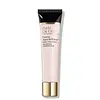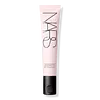What's inside
What's inside
 Key Ingredients
Key Ingredients

 Benefits
Benefits

 Concerns
Concerns

 Ingredients Side-by-side
Ingredients Side-by-side

Water
Skin ConditioningMethyl Trimethicone
Skin ConditioningButylene Glycol
HumectantGlycerin
HumectantGlycereth-26
HumectantPropanediol
SolventDimethicone
EmollientSodium Hyaluronate
HumectantTocopheryl Acetate
AntioxidantSqualane
EmollientHelianthus Annuus Seed Extract
Skin ConditioningPropylene Glycol Dicaprate
EmollientCucumis Sativus Fruit Extract
EmollientSimmondsia Chinensis Seed Oil
EmollientHaberlea Rhodopensis Leaf Extract
Skin ConditioningBeta Vulgaris Root Extract
Skin ConditioningPalmitoyl Tripeptide-1
Skin ConditioningArtemia Extract
Skin ConditioningNymphaea Alba Root Extract
Skin ConditioningHordeum Vulgare Extract
EmollientPolygala Senega Root Extract
RefreshingBeta Vulgaris Extract
Skin ProtectingCaffeine
Skin ConditioningPhenyl Trimethicone
Skin ConditioningAscorbyl Glucoside
AntioxidantBetaine
HumectantTrehalose
HumectantEthylhexyl Palmitate
EmollientCetyl PEG/PPG-10/1 Dimethicone
EmulsifyingLauryl PEG-9 Polydimethylsiloxyethyl Dimethicone
Skin ConditioningCholesterol
EmollientMethyldihydrojasmonate
MaskingMethicone
EmollientCaprylyl Glycol
EmollientTriticum Vulgare Germ Extract
Skin ConditioningYeast Extract
Skin ConditioningTribehenin
EmollientGlucose
HumectantSucrose
HumectantTin Oxide
AbrasiveDimethicone/PEG-10/15 Crosspolymer
Dipropylene Glycol
HumectantPEG-75
HumectantSilica Dimethyl Silylate
EmollientSorbitan Isostearate
EmulsifyingPolysilicone-11
Synthetic Fluorphlogopite
Xanthan Gum
EmulsifyingPolyquaternium-51
Skin ConditioningNylon-12
Citric Acid
BufferingSodium Chloride
MaskingDisodium EDTA
Sodium Citrate
BufferingChlorphenesin
AntimicrobialPotassium Sorbate
PreservativePhenoxyethanol
PreservativeMica
Cosmetic ColorantCI 77891
Cosmetic ColorantCI 77491
Cosmetic ColorantCI 77163
Cosmetic ColorantWater, Methyl Trimethicone, Butylene Glycol, Glycerin, Glycereth-26, Propanediol, Dimethicone, Sodium Hyaluronate, Tocopheryl Acetate, Squalane, Helianthus Annuus Seed Extract, Propylene Glycol Dicaprate, Cucumis Sativus Fruit Extract, Simmondsia Chinensis Seed Oil, Haberlea Rhodopensis Leaf Extract, Beta Vulgaris Root Extract, Palmitoyl Tripeptide-1, Artemia Extract, Nymphaea Alba Root Extract, Hordeum Vulgare Extract, Polygala Senega Root Extract, Beta Vulgaris Extract, Caffeine, Phenyl Trimethicone, Ascorbyl Glucoside, Betaine, Trehalose, Ethylhexyl Palmitate, Cetyl PEG/PPG-10/1 Dimethicone, Lauryl PEG-9 Polydimethylsiloxyethyl Dimethicone, Cholesterol, Methyldihydrojasmonate, Methicone, Caprylyl Glycol, Triticum Vulgare Germ Extract, Yeast Extract, Tribehenin, Glucose, Sucrose, Tin Oxide, Dimethicone/PEG-10/15 Crosspolymer, Dipropylene Glycol, PEG-75, Silica Dimethyl Silylate, Sorbitan Isostearate, Polysilicone-11, Synthetic Fluorphlogopite, Xanthan Gum, Polyquaternium-51, Nylon-12, Citric Acid, Sodium Chloride, Disodium EDTA, Sodium Citrate, Chlorphenesin, Potassium Sorbate, Phenoxyethanol, Mica, CI 77891, CI 77491, CI 77163
Butyl Methoxydibenzoylmethane 2%
UV AbsorberHomosalate 6%
Skin ConditioningEthylhexyl Salicylate 5%
UV AbsorberOctocrylene 1.6%
UV AbsorberWater
Skin ConditioningCaprylyl Methicone
Skin ConditioningDipropylene Glycol
HumectantPropanediol
SolventDimethicone
EmollientButyloctyl Salicylate
Skin ConditioningLactobacillus Ferment
Skin ConditioningIsododecane
EmollientAmmonium Acryloyldimethyltaurate/Vp Copolymer
Trisiloxane
Skin ConditioningPolysorbate 60
EmulsifyingTrimethylsiloxysilicate
EmollientDextrin Palmitate
EmulsifyingPhenoxyethanol
PreservativeC14-22 Alcohols
Emulsion StabilisingHydroxyethyl Acrylate/Sodium Acryloyldimethyl Taurate Copolymer
Emulsion StabilisingHydrolyzed Wheat Protein/Pvp Crosspolymer
Panthenol
Skin ConditioningParfum
MaskingEvodia Rutaecarpa Fruit Extract
Skin ConditioningDibutyl Ethylhexanoyl Glutamide
Skin ConditioningDibutyl Lauroyl Glutamide
Skin ConditioningDisodium EDTA
C12-20 Alkyl Glucoside
EmulsifyingDipotassium Glycyrrhizate
HumectantTocopheryl Acetate
AntioxidantSodium Hyaluronate
HumectantButylene Glycol
HumectantPentylene Glycol
Skin ConditioningTin Oxide
AbrasivePotassium Sorbate
PreservativeHydroxyphenyl Propamidobenzoic Acid
Skin ConditioningEthylhexylglycerin
Skin ConditioningAscorbyl Palmitate
AntioxidantMica
Cosmetic ColorantTitanium Dioxide
Cosmetic ColorantCI 14700
Cosmetic ColorantCI 19140
Cosmetic ColorantButyl Methoxydibenzoylmethane 2%, Homosalate 6%, Ethylhexyl Salicylate 5%, Octocrylene 1.6%, Water, Caprylyl Methicone, Dipropylene Glycol, Propanediol, Dimethicone, Butyloctyl Salicylate, Lactobacillus Ferment, Isododecane, Ammonium Acryloyldimethyltaurate/Vp Copolymer, Trisiloxane, Polysorbate 60, Trimethylsiloxysilicate, Dextrin Palmitate, Phenoxyethanol, C14-22 Alcohols, Hydroxyethyl Acrylate/Sodium Acryloyldimethyl Taurate Copolymer, Hydrolyzed Wheat Protein/Pvp Crosspolymer, Panthenol, Parfum, Evodia Rutaecarpa Fruit Extract, Dibutyl Ethylhexanoyl Glutamide, Dibutyl Lauroyl Glutamide, Disodium EDTA, C12-20 Alkyl Glucoside, Dipotassium Glycyrrhizate, Tocopheryl Acetate, Sodium Hyaluronate, Butylene Glycol, Pentylene Glycol, Tin Oxide, Potassium Sorbate, Hydroxyphenyl Propamidobenzoic Acid, Ethylhexylglycerin, Ascorbyl Palmitate, Mica, Titanium Dioxide, CI 14700, CI 19140
Ingredients Explained
These ingredients are found in both products.
Ingredients higher up in an ingredient list are typically present in a larger amount.
Butylene Glycol (or BG) is used within cosmetic products for a few different reasons:
Overall, Butylene Glycol is a safe and well-rounded ingredient that works well with other ingredients.
Though this ingredient works well with most skin types, some people with sensitive skin may experience a reaction such as allergic rashes, closed comedones, or itchiness.
Learn more about Butylene GlycolDimethicone is a type of synthetic silicone created from natural materials such as quartz.
What it does:
Dimethicone comes in different viscosities:
Depending on the viscosity, dimethicone has different properties.
Ingredients lists don't always show which type is used, so we recommend reaching out to the brand if you have questions about the viscosity.
This ingredient is unlikely to cause irritation because it does not get absorbed into skin. However, people with silicone allergies should be careful about using this ingredient.
Note: Dimethicone may contribute to pilling. This is because it is not oil or water soluble, so pilling may occur when layered with products. When mixed with heavy oils in a formula, the outcome is also quite greasy.
Learn more about DimethiconeDipropylene Glycol is a synthetically created humectant, stabilizer, and solvent.
This ingredient helps:
Dipropylene glycol is technically an alcohol, but it belongs to the glycol family (often considered part of the ‘good’ alcohols). This means it is hydrating and gentle on skin unlike drying solvent alcohols like denatured alcohol.
As a masking agent, Dipropylene Glycol can be used to cover the smell of other ingredients. However, it does not have a scent.
Studies show Dipropylene Glycol is considered safe to use in skincare.
Learn more about Dipropylene GlycolDisodium EDTA plays a role in making products more stable by aiding other preservatives.
It is a chelating agent, meaning it neutralizes metal ions that may be found in a product.
Disodium EDTA is a salt of edetic acid and is found to be safe in cosmetic ingredients.
Learn more about Disodium EDTAMica is a naturally occurring mineral used to add shimmer and color in cosmetics. It can also help improve the texture of a product or give it an opaque, white/silver color.
Serecite is the name for very fine but ragged grains of mica.
This ingredient is often coated with metal oxides like titanium dioxide. Trace amounts of heavy metals may be found in mica, but these metals are not harmful in our personal products.
Mica has been used since prehistoric times throughout the world. Ancient Egyptian, Indian, Greek, Roman, Aztec, and Chinese civilizations have used mica.
Learn more about MicaPhenoxyethanol is a preservative that has germicide, antimicrobial, and aromatic properties. Studies show that phenoxyethanol can prevent microbial growth. By itself, it has a scent that is similar to that of a rose.
It's often used in formulations along with Caprylyl Glycol to preserve the shelf life of products.
Potassium Sorbate is a preservative used to prevent yeast and mold in products. It is commonly found in both cosmetic and food products.
This ingredient comes from potassium salt derived from sorbic acid. Sorbic acid is a natural antibiotic and effective against fungus.
Both potassium sorbate and sorbic acid can be found in baked goods, cheeses, dried meats, dried fruit, ice cream, pickles, wine, yogurt, and more.
You'll often find this ingredient used with other preservatives.
Learn more about Potassium SorbatePropanediol is an all-star ingredient. It softens, hydrates, and smooths the skin.
It’s often used to:
Propanediol is not likely to cause sensitivity and considered safe to use. It is derived from corn or petroleum with a clear color and no scent.
Learn more about PropanediolSodium Hyaluronate is hyaluronic acid's salt form. It is commonly derived from the sodium salt of hyaluronic acid.
Like hyaluronic acid, it is great at holding water and acts as a humectant. This makes it a great skin hydrating ingredient.
Sodium Hyaluronate is naturally occurring in our bodies and is mostly found in eye fluid and joints.
These are some other common types of Hyaluronic Acid:
Learn more about Sodium HyaluronateTin Oxide is an inorganic oxide used to add opacity and volume to a product. In nature, it is already found in mineral form. The main ore of tin is an opaque and shiny mineral called casseterite.
Tin Oxide helps remove translucency in a product, or make it more opaque. Besides adding opacity, tin oxide is used for bulking to add volume.
Tocopheryl Acetate is AKA Vitamin E. It is an antioxidant and protects your skin from free radicals. Free radicals damage the skin by breaking down collagen.
One study found using Tocopheryl Acetate with Vitamin C decreased the number of sunburned cells.
Tocopheryl Acetate is commonly found in both skincare and dietary supplements.
Learn more about Tocopheryl AcetateWater. It's the most common cosmetic ingredient of all. You'll usually see it at the top of ingredient lists, meaning that it makes up the largest part of the product.
So why is it so popular? Water most often acts as a solvent - this means that it helps dissolve other ingredients into the formulation.
You'll also recognize water as that liquid we all need to stay alive. If you see this, drink a glass of water. Stay hydrated!
Learn more about Water